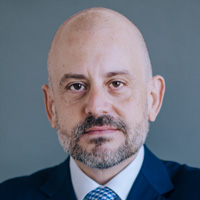Building Your Financial Plan Around Cash Flow
The process is a lot like putting a puzzle together.

When my kids were growing up, many days my wife would sit with them on the floor putting puzzles together. They would laugh and talk as they worked together arranging the pieces to create the picture on the box.
When the kids were young, the puzzles consisted of 20 pieces that could be put together without much need for the picture on the box. The older the kids got, the more complex the puzzles became and the more important the picture became for them to fully study, understand and refer back to in order to complete the puzzle.
The same is true for a financial plan. When someone is just getting started with his or her financial life, the process can seem rudimentary without much consideration. However, as assets are accumulated and life becomes more complex, the picture on the box becomes the most important part of assembling the puzzle.

Sign up for Kiplinger’s Free E-Newsletters
Profit and prosper with the best of expert advice on investing, taxes, retirement, personal finance and more - straight to your e-mail.
Profit and prosper with the best of expert advice - straight to your e-mail.
The Importance of the Picture on the Box
Think of your personal financial situation as a puzzle made up of dozens of pieces. The pieces represent all of the products, programs, thoughts, decisions, purchases, ideas, investments and anything else involving your financial life.
The picture on the box to your puzzle is your CASH FLOW. It’s where everything flows from and where everything originates. It’s where the most important decisions are made and is the most important aspect of planning to understand. You simply cannot fully put the puzzle together without the picture.
Yet, most people work around the edges of their puzzle and don’t take the time to study the picture. People will spend their time talking and debating about the pieces without considering the picture on the box. It’s similar to what often happens during financial or retirement planning. Instead of working to fulfill the picture on the box, focusing on the completion of the puzzle rather than the individual pieces, they go from one idea or adviser to the next focused on products and rates of return. The puzzle is never complete.
What is cash flow?
Cash flow is understanding where money originates. It’s about strategically using money to not only live your life but to create more income sources for yourself. When you put your focus on cash flow, it solves a hundred other decisions.
The confusing part about cash flow is that too few people understand what this really is. They believe that a monthly budget represents their cash flow. It doesn’t.
A budget is used to track expenses. It focuses on limiting them to stay within your means in order to save money. It is a mindset of scarcity and is like using a rearview mirror for managing money. A budget is merely a piece of your puzzle.
Cash flow is the picture. It focuses on where your money needs to go to fulfill the goals that you have for your future. It is like looking through a windshield to see where you are going and allows you to direct money toward creating wealth and ultimately more income. It is an abundance mindset, not a scarcity mindset.
The purpose of cash flow awareness is not simply to make ends meet, but rather to properly organize the flow of money, which allows you to create wealth and avoid debt.
How to Build a Plan Based on Cash Flow
Developing the picture on the box and assembling the pieces is a fairly straightforward process. It doesn’t require a great deal of time if you follow a few basic steps. When you think of your cash flow, break down your annual expenses into five groupings:
- Debt payments
- Tax payments
- Regular monthly expenses
- Savings and insurance transactions
- Irregular expenses throughout the year
Then list in chronological order the big-ticket items you plan to spend money on in chunks over the next five to 10 years. (This would include education, transportation, home improvements, etc.)
It is important to include the assets you plan to purchase or invest in to create more income on this list. This may be a business, rental property or some other income-producing asset you plan to acquire.
During this stage of the process, don’t think about how you will pay for these big-ticket items, just list what they are, and then circle back later to strategize as part of a financial planning process to work out the details. Take a few minutes to complete this exercise. Once you do, you’ll discover whether your current cash flow is in alignment with your plans or if adjustments need to be made.
Defining your intention for the money you have allows you to begin assembling your financial plan in a strategic, chronological manner to seek opportunities for developing new income sources. The goal is to ultimately generate enough income from your assets to satisfy these big-ticket purchases and support your entire lifestyle.
That is how financial independence is achieved.
Securities offered through Kalos Capital Inc., Member FINRA/SIPC/MSRB, and investment advisory services offered through Kalos Management Inc., an SEC registered Investment Advisor, both located at11525 Park Wood Circle, Alpharetta, GA 30005. Kalos Capital Inc. and Kalos Management Inc. do not provide tax or legal advice. Skrobonja Financial Group LLC and Skrobonja Insurance Services LLC are not an affiliate or subsidiary of Kalos Capital Inc. or Kalos Management Inc.
Disclaimer
Securities offered only by duly registered individuals through Madison Avenue Securities, LLC. (MAS), Member FINRA & SIPC. Advisory services offered only by duly registered individuals through AE Wealth Management (“AEWM”), a registered investment adviser. Skrobonja Financial Group, LLC, Skrobonja Insurance Services, LLC, AEWM and MAS are not affiliated entities. The article and opinions in this publication are for general information only and are not intended to provide specific advice or recommendations for any individual. We suggest that you consult your accountant, tax or legal adviser with regard to your individual situation.
Get Kiplinger Today newsletter — free
Profit and prosper with the best of Kiplinger's advice on investing, taxes, retirement, personal finance and much more. Delivered daily. Enter your email in the box and click Sign Me Up.

Brian Skrobonja is a Chartered Financial Consultant (ChFC®) and Certified Private Wealth Advisor (CPWA®), as well as an author, blogger, podcaster and speaker. He is the founder and president of a St. Louis, Mo.-based wealth management firm. His goal is to help his audience discover the root of their beliefs about money and challenge them to think differently to reach their goals. Brian is the author of three books, and his Common Sense podcast was named one of the Top 10 podcasts by Forbes. In 2017, 2019, 2020, 2021 and 2022, Brian was awarded Best Wealth Manager. In 2021, he received Best in Business and the Future 50 in 2018 from St. Louis Small Business.
-
 Stock Market Today: Stocks Gain on Tech, Auto Tariff Talk
Stock Market Today: Stocks Gain on Tech, Auto Tariff TalkThe Trump administration said late Friday that it will temporarily halt tariffs on some Chinese tech imports.
By Karee Venema
-
 Sam's Club Plans Aggressive Expansion: Discover Its New Locations
Sam's Club Plans Aggressive Expansion: Discover Its New LocationsSam's Club expansion plans will open up to 15 new stores each year. Learn where they plan to open in 2025.
By Sean Jackson
-
 How Baby Boomers and Gen Xers Are Redefining Retirement Living
How Baby Boomers and Gen Xers Are Redefining Retirement LivingBoth generations need to embrace change and leverage real estate as a dynamic asset in their retirement planning. Here's how financial advisers can help, too.
By David Conti, CPRC
-
 How Good Advisers Manage Risk in Challenging Markets
How Good Advisers Manage Risk in Challenging MarketsThey understand the difference between what might be real challenges to an investor's strategy and fear brought on by market volatility.
By Ryan L. Kirk, CFA®
-
 Financial Planning's Paradox: Balancing Riches and True Wealth
Financial Planning's Paradox: Balancing Riches and True WealthWhile enough money is important for financial security, it does not guarantee fulfillment. How can retirees and financial advisers keep their eye on the ball?
By Richard P. Himmer, PhD
-
 A Confident Retirement Starts With These Four Strategies
A Confident Retirement Starts With These Four StrategiesWork your way around income gaps, tax gaffes and Social Security insecurity with some thoughtful planning and analysis.
By Nick Bare, CFP®
-
 Should You Still Wait Until 70 to Claim Social Security?
Should You Still Wait Until 70 to Claim Social Security?Delaying Social Security until age 70 will increase your benefits. But with shortages ahead, and talk of cuts, is there a case for claiming sooner?
By Evan T. Beach, CFP®, AWMA®
-
 Retirement Planning for Couples: How to Plan to Be So Happy Together
Retirement Planning for Couples: How to Plan to Be So Happy TogetherPlanning for retirement as a couple is a team sport that takes open communication, thoughtful planning and a solid financial strategy.
By Andrew Rosen, CFP®, CEP
-
 Market Turmoil: What History Tells Us About Current Volatility
Market Turmoil: What History Tells Us About Current VolatilityThis up-and-down uncertainty is nerve-racking, but a look back at previous downturns shows that the markets are resilient. Here's how to ride out the turmoil.
By Michael Aloi, CFP®
-
 Could You Retire at 59½? Five Considerations
Could You Retire at 59½? Five ConsiderationsWhile some people think they should wait until they're 65 or older to retire, retiring at 59½ could be one of the best decisions for your quality of life.
By Joe F. Schmitz Jr., CFP®, ChFC®